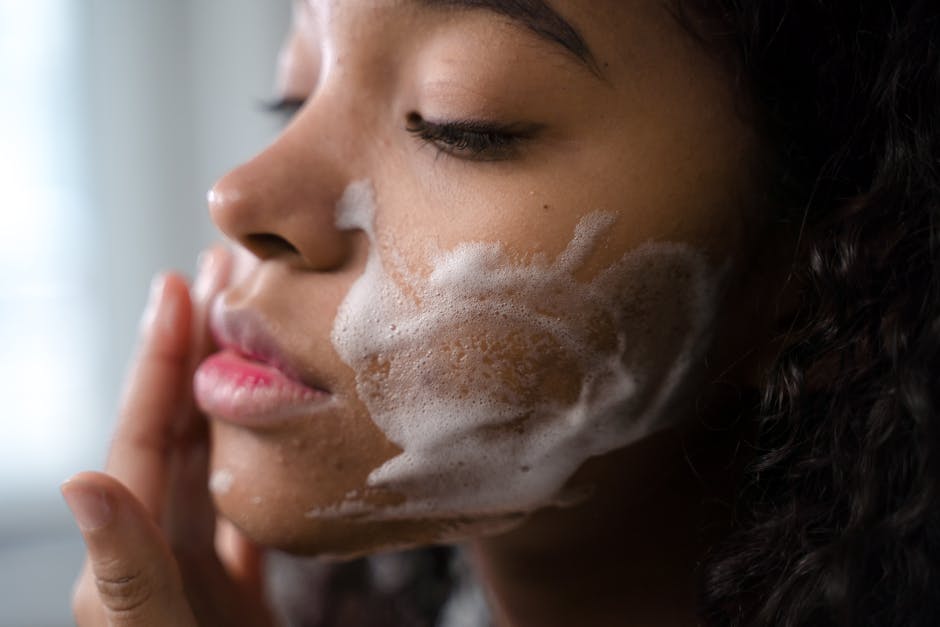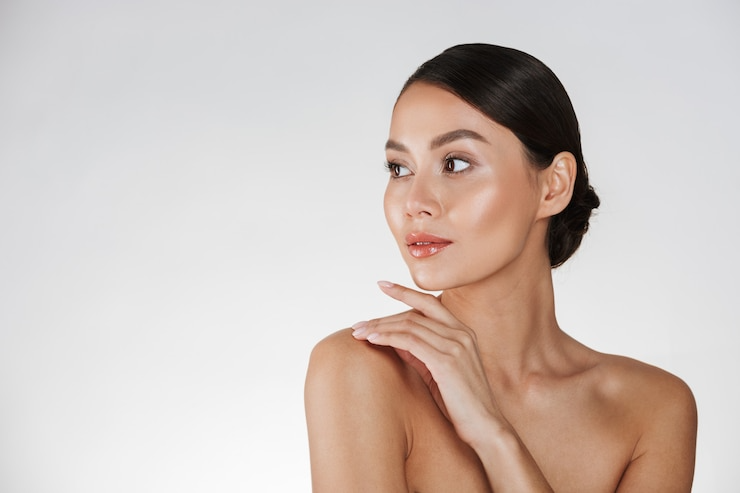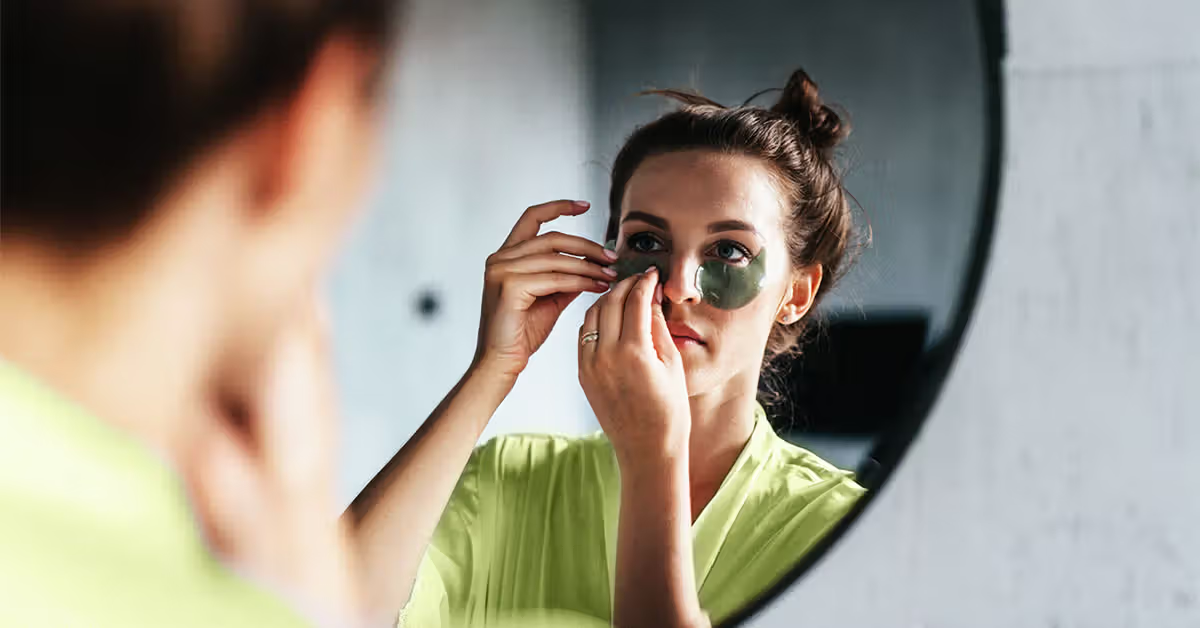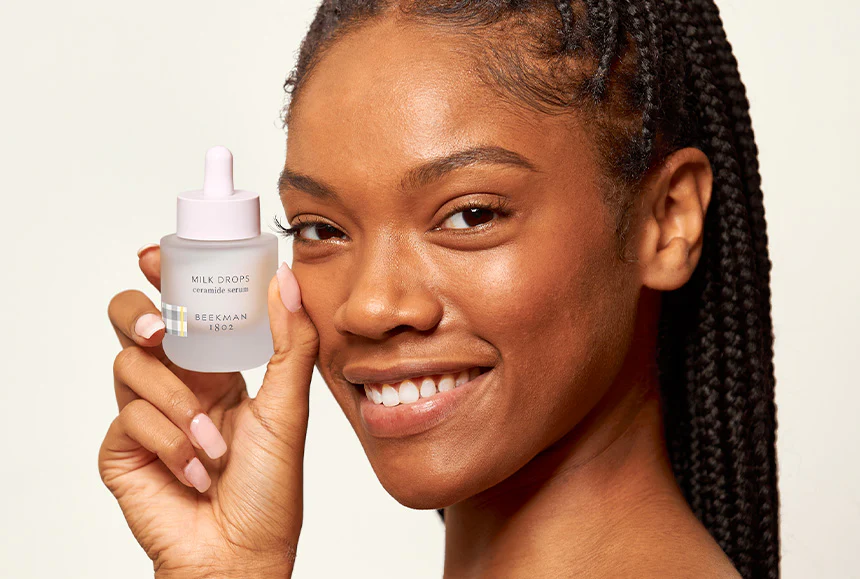The Foundation of Radiant Skin
Beauty tips for clear and glowing skin don’t have to involve expensive products or complicated routines. If you’re looking for simple ways to achieve that healthy glow without emptying your wallet, here are the essentials:
- Cleanse twice daily with a gentle, pH-balanced cleanser
- Moisturize while skin is still damp to lock in hydration
- Apply broad-spectrum SPF 30+ sunscreen every day
- Exfoliate 1-2 times weekly (not daily)
- Stay hydrated by drinking plenty of water
- Eat antioxidant-rich foods like berries, leafy greens, and nuts
- Get 7-9 hours of sleep nightly
- Manage stress through relaxation techniques
According to the Mayo Clinic, even if you don’t have time for an intensive routine, focusing on the essentials can still help keep your skin healthy. Many of us find after trying countless expensive products that the simplest approach often works best.
Achieving clear, glowing skin isn’t just about what you put on your face—it’s about how you treat your body overall. Research consistently shows that factors like sleep quality, stress levels, and diet significantly impact skin appearance. A 2015 study found that proper hydration directly improves skin function and moisture retention, while regular exercise supports skin structure.
The beauty industry might suggest that radiant skin requires a cabinet full of costly serums and creams, but the truth is much simpler—and more budget-friendly. By sticking to gentle, consistent care and prioritizing a healthy lifestyle, you can achieve that coveted glow without overspending.
1. Understand Your Skin Type
Ever tried a friend’s “miracle” face cream only to wake up with irritated skin? We’ve all been there! The truth is, understanding your unique skin type isn’t just useful—it’s the essential first step to achieving that glow without wasting money on products that don’t suit you.
Think of your skin type as a beauty compass. Without it, you’re just wandering aimlessly through the skincare aisle, hoping something works!
Your skin generally falls into one of these categories:
• Oily skin often appears shiny by midday with enlarged pores and more frequent breakouts.
• Dry skin feels tight and uncomfortable, showing flaky patches and a dull appearance.
• Combination skin behaves like a mix—oily in the T-zone (forehead, nose, chin) but dry on the cheeks.
• Normal skin is balanced and neither excessively oily nor excessively dry.
• Sensitive skin can react to many products or environments with redness, itching, or irritation.
Dermatologists often emphasize that healthy skin doesn’t necessarily mean flawless skin. This perspective helps set realistic expectations and encourages you to appreciate your skin’s traits rather than chase airbrushed perfection.
Want to identify your skin type at home? Try this simple test:
- Wash your face with a gentle cleanser.
- Pat dry and wait one hour without applying anything.
- Observe your skin—if it feels tight and looks flaky, you’re likely in the dry camp. Shiny all over? Oily skin. Shiny T-zone but normal cheeks? Combination skin. Comfortable and balanced? You’ve got normal skin.
Once you understand your skin type, you can adapt your beauty tips for clear and glowing skin accordingly. For instance, lightweight gel moisturizers work well for oily skin, while richer formulations soothe dry skin.
Always remember to patch test new products before applying them all over. A small dab behind your ear or on your inner forearm for 24 hours can spare you a full-face reaction fiasco!
Knowing your skin type is empowering—it helps you make thoughtful decisions that align with your complexion’s unique needs, and your skin will show its gratitude through a healthy, natural glow.
2. Cleanse Gently but Effectively
Let’s talk about face washing—something we all do, but few of us truly master. Cleansing is like the foundation of a house: if it’s not solid, everything built on top won’t be as effective.
Research published in the Journal of Pediatric Dermatology found something compelling—washing your face twice daily significantly reduced acne compared to cleansing just once. But it’s not about scrubbing harshly or using aggressive products. In fact, that can backfire.
It’s helpful to think of cleansing as an art—it requires a gentle touch and the right techniques to maintain the skin’s natural balance of oils and friendly bacteria. Using lukewarm water rather than hot water helps protect these natural oils, preventing dryness.
Opt for a gentle, pH-balanced cleanser suited to your skin type. Those foaming cleansers that leave you feeling “squeaky clean” may actually strip your skin barrier—never a good thing.
When you cleanse, take your time. Massage in gentle circular motions for 30-60 seconds, allowing the cleanser to do its job. Rinse thoroughly to prevent residue from irritating your skin, and pat dry with a clean towel.
If you have dry or sensitive skin, a traditional morning cleanse may be excessive. Some people find success using micellar water in the morning, which cleanses and hydrates in one step.
For makeup or sunscreen wearers (and hopefully you’re wearing sunscreen!), double cleansing in the evening can be a game-changer:
- Use an oil-based cleanser or micellar water to break down makeup and sunscreen.
- Follow with a gentle cleanser to clean the skin itself.
Your skin shouldn’t feel tight after washing. That tightness indicates your cleanser may be overly harsh. The goal is clear, comfortable skin that’s ready to absorb the rest of your beauty tips for clear and glowing skin routine.

3. Beauty Tips for Clear and Glowing Skin: Exfoliate Regularly
The glow we all want often lies just beneath a thin layer of dead skin cells. Regular exfoliation—done properly—reveals the fresh, more radiant skin below.
Your skin is constantly renewing itself, but sometimes it needs a gentle nudge to shed those old cells. That’s where exfoliation comes in. There are two main methods:
• Physical exfoliation uses scrubs, brushes, or cloths to manually lift away dead cells. Be sure to use a gentle touch to avoid irritation.
• Chemical exfoliation uses acids or enzymes to dissolve the “glue” holding dead cells in place. It’s often more uniform and can be gentler overall.
Many skincare experts note that exfoliators help keep skin clear and better able to absorb hydrating ingredients. By removing cellular buildup, your serums and moisturizers can penetrate more effectively.
You don’t need a fancy exfoliant. A simple DIY scrub made with gram flour, yogurt, and a pinch of turmeric can work wonders. Or consider budget-friendly drugstore products containing glycolic or salicylic acid. Even plain yogurt has natural lactic acid for gentle exfoliation.
One community member noticed a significant improvement in skin texture and clarity within just three weeks of introducing a chemical exfoliant twice weekly—and such results are fairly common with consistent use.
How Often Should You Exfoliate?
Your skin’s tolerance should guide how often you exfoliate, not someone else’s routine. Sensitive skin might be fine with once every 7-10 days, while dry skin types do well at 1-2 times weekly. Normal or combination skin can generally handle 2-3 sessions weekly, and oilier types might benefit from up to three.
Always watch out for redness, tightness, or increased sensitivity—signs that it’s time to scale back. Healthy exfoliation should leave your skin feeling refreshed, not irritated.
Exfoliation makes your skin more sun-sensitive, so sunscreen is even more vital. Always protect your freshly revealed skin cells with SPF if you’re heading outside.
Properly done, regular exfoliation supports your natural cell turnover process instead of fighting against it—making it a powerful component among your beauty tips for clear and glowing skin.
4. Moisturize to Lock in Hydration
Moisturizing isn’t a luxury—it’s a necessity for everyone, regardless of skin type. Even if you have oily skin, a suitable moisturizer maintains your skin’s protective barrier and guards against the elements while locking in hydration.
Try the simple “three-second rule” that costs nothing: apply moisturizer while your skin is still slightly damp, ideally within a few seconds of patting your face dry. By sealing in the water that remains on your skin, you boost the hydrating effects significantly.
A fascinating 2015 study in the Journal of Clinical and Aesthetic Dermatology confirmed that putting moisturizer on damp skin improves hydration. The product traps water before it evaporates, much like sealing moisture inside a container.
Choose a moisturizer based on your skin type:
• Dry skin often benefits from richer formulas containing ceramides, hyaluronic acid, or shea butter.
• Oily skin still needs moisturizer—just opt for lightweight, non-comedogenic gels or lotions.
• Combination skin may require a lighter product overall and a richer cream on drier areas.
• Sensitive skin typically does best with fragrance-free products featuring only a few gentle ingredients.
It’s often said that outer beauty reflects what’s happening inside, and hydration exemplifies this perfectly. Drinking enough water throughout the day complements the work of topical moisturizers, supporting skin elasticity and clarity from within.
You don’t need to break the bank on fancy moisturizers, either. Simple options like petroleum jelly (for very dry areas) or a few drops of vegetable glycerin mixed with water can be quite effective. Your neck, chest, and hands also benefit from moisturizing. These areas can show signs of aging just as prominently as your face.
As confirmed by multiple studies, including data from the National Institutes of Health, consistent hydration plays a major role in maintaining healthy, resilient skin. Out of all the beauty tips for clear and glowing skin, incorporating a moisturizer you trust into your daily routine is one of the easiest and most impactful steps you can take.
5. Protect Your Skin from the Sun

If there’s one essential that trumps all others in your routine, it’s sunscreen. Daily sun protection helps maintain youthful-looking skin and significantly reduces future health risks.
According to this publication, consistent sunscreen use can cut melanoma risk by about 50% and also slow visible signs of aging.
Sunscreen isn’t just about avoiding sunburn on beach days. Those smaller, everyday exposures to UV rays add up quietly, contributing to issues like wrinkles, uneven pigmentation, and an increased likelihood of skin cancer.
For the best shield, use broad-spectrum SPF 30 or higher daily—rain or shine—and remember that your face alone needs about a quarter-sized amount. If you’re outdoors for an extended time, reapply every two hours, or more frequently if you’re swimming or sweating.
Protective clothing like wide-brimmed hats and sunglasses offers extra defense. Also consider seeking shade during peak sun hours (10 a.m. to 4 p.m.).
Many drugstore sunscreens deliver excellent protection at a budget-friendly price, so there’s no need to splurge. If breakouts are a concern, look for “non-comedogenic” on the label. Sensitive skin types may prefer mineral sunscreens with zinc oxide or titanium dioxide.
Making sunscreen a daily habit often leads to noticeable improvements in skin tone and texture over time, proving that this single step can be transformative among beauty tips for clear and glowing skin. Sun protection truly matters year-round, not just in the summer. What about vitamin D? Diet and supplements are safer, more reliable sources than unprotected sun exposure—a choice your skin will appreciate in the long run.
6. Nourish Your Skin from Within
It’s often surprising how powerfully dietary choices influence your skin. Many people report more lasting results from adjusting their eating habits than from pricey creams.
Think of food as construction material for your skin. Each new skin cell depends on nutrients you provide, making your diet crucial to the renewal process.
Research highlights several key nutrients for skin health:
• Vitamin A regulates oil production and supports cell turnover; find it in sweet potatoes, carrots, and leafy greens.
• Vitamin C is necessary for collagen production and serves as an antioxidant shield, as confirmed by one study in Frontiers in Physiology. Good sources include citrus fruits, strawberries, and bell peppers.
• Vitamin E defends skin cells from damage. Avocados, nuts, and seeds are excellent options.
• Omega-3 fatty acids help keep the skin’s moisture barrier intact and reduce inflammation. Salmon, walnuts, and flaxseeds are great examples.
• Zinc aids in wound healing and oil control. Oysters, pumpkin seeds, and lentils are all rich sources.
Antioxidant-heavy foods, such as berries and dark leafy greens, protect against free radicals that contribute to aging. Even small dietary tweaks—like a cup of mixed berries at breakfast or a handful of nuts as a snack—can make a big difference for skin clarity and glow.
On the flip side, high-glycemic foods (white bread, sugary treats) and excessive dairy sometimes aggravate issues like acne. Reducing these foods in favor of whole, unprocessed options supports clearer skin.
Visual changes from dietary adjustments can take a few weeks because new skin cells need time to surface. But when it comes to beauty tips for clear and glowing skin, nourishing your body from within is a fundamental principle with lasting impact.
7. Stay Hydrated
Water may be the simplest beauty secret around, yet it’s often overlooked. Since skin is about 64% water, it stands to reason that when you’re well-hydrated, your complexion appears more vibrant and plump, and any fine lines are less noticeable.
Some people find that drinking a good amount of water right after waking up—around 750 ml first thing in the morning—helps boost their skin’s brightness and texture within just a few weeks. While exact water needs vary by individual, the National Academies of Sciences suggests aiming for around 3.7 liters of fluid daily for men and 2.7 liters for women, including water-rich foods and other beverages.
If plain water feels dull, spice it up by adding cucumber slices, berries, or citrus. Herbal teas also count, and coconut water offers electrolytes—just check for added sugars if you’re mindful of your intake.
That caffeinated or alcoholic beverages can offset some hydration by acting as diuretics. So balance these choices with extra water.

Dry, flaky patches, dullness, pronounced fine lines, and dark under-eye circles can all be signs that your skin needs more fluids. Even the best moisturizers can’t fully compensate if your skin cells are under-hydrated from within.
The synergy of internal hydration and topical moisturizers is a powerful one, transporting nutrients to skin cells and flushing out toxins. Make it a habit to have water handy throughout the day, and your skin will reward you with a healthier look—an often undervalued yet crucial part of beauty tips for clear and glowing skin.
8. Get Enough Sleep and Manage Stress
“Beauty sleep” isn’t just a catchy phrase—it truly has a biological basis. A fascinating study published in Clinical and Experimental Dermatology finded that people getting 7-9 hours of sleep regularly showed better skin repair and less pronounced aging markers than those sleeping 5 hours or less.
Your body ramps up repair mode during deeper stages of sleep, regenerating skin cells and addressing damage from daily environmental stress. In contrast, chronic lack of sleep has been associated with more frequent breakouts, dullness, and deeper-looking fine lines.
Managing stress is equally vital. When you’re under chronic stress, cortisol levels rise, provoking inflammation and possibly triggering flare-ups of acne, eczema, or psoriasis. Learning healthy coping mechanisms—like deep breathing, journaling, or regular physical activity—can stabilize stress hormones and ultimately support clearer, calmer skin.
Through mindfulness practices or even just a brief walk in nature, you can lower stress and promote a more balanced internal environment. These strategies cost next to nothing yet profoundly influence your complexion.
Put simply, prioritizing rest and stress reduction is one of the most powerful beauty tips for clear and glowing skin, working from the inside out. Aim for consistent sleep patterns, set boundaries to reduce unnecessary stress, and give your body the restorative time it needs to help your skin shine.
9. Adopt a Minimalist Skincare Routine
In a world brimming with elaborate 12-step regimens, it can be refreshing to learn that beauty tips for clear and glowing skin often emphasize the power of simplicity. Overloading your skin with products can cause irritation, undermine the skin barrier, and drain your wallet.
Many people see dramatic improvements when they switch to a streamlined routine. Rather than juggling countless bottles, focus on a few effective fundamentals:
• A gentle, non-stripping cleanser to remove impurities.
• A simple moisturizer suited to your skin type (richer for dry skin, lightweight for oily skin).
• A broad-spectrum SPF 30+ sunscreen to protect your complexion daily.
If you have a specific concern—like persistent acne—incorporate just one targeted treatment product. Overloading on various active ingredients can create more problems than it solves.
Your skin often regulates itself well when not bombarded with excessive ingredients. Also, using fewer products makes it easier to identify which ones work—and which might cause irritations or breakouts.
Think of it this way: the skin’s natural processes have evolved over a long time. Sometimes giving them space to function with gentle, consistent support leads to healthier results than an overly complex routine.
If you must add extras, choose carefully and avoid known irritants, harsh fragrances, and unnecessary fillers. A minimalist approach is not only kinder to your skin but also more sustainable for your schedule and budget.
10. Be Consistent and Patient
One of the most important beauty tips for clear and glowing skin is to accept consistency and patience. Skin renewal happens over roughly a month for most adults (and longer as we age), so real results take time.
It’s easy to jump from one trendy product to another when you don’t see immediate changes. However, giving a routine at least one full skin cycle (around 28 days) often reveals its true effectiveness. Many people find that committing to a simple set of products for three months produces notable, lasting improvements.
If you’re prone to product-hopping, consider documenting your skin’s progress with weekly photos. Day-to-day changes can be subtle, but comparing snapshots several weeks apart often shows real change.
Certain concerns demand an even longer timeline—hyperpigmentation may need 3-6 months of consistent treatment to fade significantly, and acne treatments typically require at least 6-12 weeks of steady use. Building collagen with retinol-based products? Expect a 3+ month journey.
Skincare is a long game, and the best results come from gentle, ongoing care rather than extreme, short-lived measures. Those “overnight fix” promises rarely address underlying issues. By contrast, a measured approach aligned with your skin’s natural cycles fosters sustainable progress.
Above all, try to find comfort in caring for your skin as part of a self-care routine. Those daily rituals can provide a soothing moment in your busy day, and over time, they’ll reward you with the healthy, radiant look you’re seeking.
Frequently Asked Questions about Beauty Tips for Clear and Glowing Skin
How often should I exfoliate my skin?
It varies, depending on your skin’s sensitivity and the product type. Sensitive skin may manage once every 7-10 days with milder exfoliants, while drier types suit about 1-2 times weekly. Combination or normal skin often handles 2-3 exfoliation sessions weekly, and those with oily skin may go up to three times.
Chemical exfoliants—like AHAs and BHAs—tend to provide a more even exfoliation. Just remember to start cautiously, observing for redness or irritation. Over-exfoliation can weaken your skin barrier, so it’s best to gradually find your ideal frequency.
Can diet really affect my skin’s appearance?
Absolutely! A 2020 study tracking over 24,000 participants revealed strong links between dietary habits and skin health. Your skin tends to look its best when you incorporate omega-3-rich fish, antioxidant-packed fruits and vegetables, nuts, and seeds into your meals. Fermented foods like yogurt and kimchi can also support gut health, which impacts the skin.
On the other hand, foods high on the glycemic index (white bread, sweets) and certain forms of dairy have been associated with acne flares in some people. While everyone’s triggers may differ, many notice significant improvements after making thoughtful changes to their eating patterns.
What’s the best way to protect my skin from the sun?
Year-round sunscreen application is a key factor. Pick a broad-spectrum SPF 30+ formula and apply it generously—even on cloudy days. Reapply every two hours if you’re outside, or after swimming or sweating. Complement sunscreen with protective clothing such as wide-brimmed hats and sunglasses, and some people also add UV-filtering window films to their homes and cars.
Mineral sunscreens containing zinc oxide or titanium dioxide often suit sensitive skin, while chemical sunscreens can be equally effective. The best choice is one you’ll use consistently. Studies show regular sunscreen use can reduce melanoma risk by around 50% and significantly slow signs of photoaging.
Conclusion
The path to radiant skin doesn’t need to be stressful or expensive. At Beyond Beauty Lab, we’ve long believed that beauty tips for clear and glowing skin rest on a combination of mindful lifestyle choices and straightforward skincare steps.
Throughout this guide, we’ve highlighted practical basics: understanding your skin type, gentle cleansing, sensible exfoliation, proper moisturizing, and daily sun protection. We’ve also covered the importance of a balanced diet, adequate water intake, restorative sleep, and effective stress management.
Often, it’s the simplest, most consistent practices that open up the vibrant glow you desire. And if you’re looking to further improve your skincare routine, be sure to check out our post on Seasonal Superfoods for Radiant Skin All Year Long for more ideas on using the power of nourishing foods.
The journey toward healthy, glowing skin is multifaceted, blending self-care, nutrition, and product choices that honor your skin’s unique needs. Accept patience and consistency, and you’ll build a foundation for lasting radiance that no passing trend can beat.







